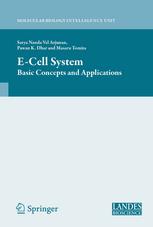

Most ebook files are in PDF format, so you can easily read them using various software such as Foxit Reader or directly on the Google Chrome browser.
Some ebook files are released by publishers in other formats such as .awz, .mobi, .epub, .fb2, etc. You may need to install specific software to read these formats on mobile/PC, such as Calibre.
Please read the tutorial at this link: https://ebookbell.com/faq
We offer FREE conversion to the popular formats you request; however, this may take some time. Therefore, right after payment, please email us, and we will try to provide the service as quickly as possible.
For some exceptional file formats or broken links (if any), please refrain from opening any disputes. Instead, email us first, and we will try to assist within a maximum of 6 hours.
EbookBell Team

4.8
54 reviewsThe interdisciplinary field of molecular systems biology aims to understand the behavior and mechanisms of biological processes composed of individual molecular components. As we gain more qualitative and quantitative information of complex intracellular processes, biochemical modeling and simulation become indispensable not only to uncover the molecular mechanisms of the processes, but to perform useful predictions. To this end, the E‑Cell System, a multi‑algorithm, multi‑timescale object‑oriented simulation platform, can be used to construct predictive virtual biological systems. Gene regulatory and biochemical networks that constitute a sub‑ or a whole cellular system can be constructed using the E‑Cell System to perform qualitative and quantitative analyses. The purpose of E‑Cell System: Basic Concepts and Applications is to provide a comprehensive guide for the E‑Cell System version 3 in terms of the software features and its usage. While the publicly available E‑Cell Simulation Environment version 3 User's Manual provides the technical details of model building and scripting, it does not describe some of the underlying concepts of the E‑Cell System. The first part of the book addresses this issue by providing the basic concepts of modeling and simulation with the E‑Cell System.